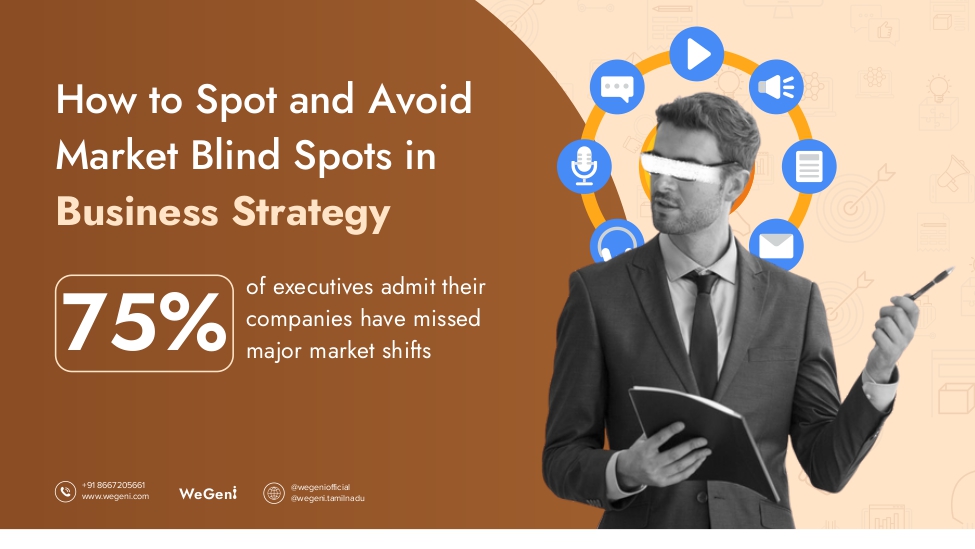

Why Smart Leaders Still Miss Market Shifts?
Every business leader fears this: What if we miss the next big shift?
That’s exactly what market blind spots are. They’re not invisible — they’re signals we often ignore 🚦.
👉 A competitor rising quietly.
👉 Customers moving toward new solutions.
👉 A small startup changing the game.
The danger? Blind spots don’t ruin businesses because they exist — they ruin them because leaders notice them too late ⏳.
🤔 What Are Market Blind Spots?
A market blind spot is anything important that a business overlooks. It could be:
🆕 A competitor gaining traction in your space.
👥 Customers quietly shifting to a new solution.
💡 A technology trend changing how people buy.
Blind spots are often invisible until they cause problems.
⚡ Why Do Businesses Miss Them?
Even successful companies face blind spots. Common reasons include:
💪 Overconfidence – Believing past success will continue.
🎯 Narrow focus – Watching only direct competitors.
🐢 Slow response – Ignoring small signals until they grow big.
🔇 Poor feedback loops – Not listening closely to customers or employees.
By the time leaders notice, competitors or trends may already be ahead 🏃♂️
👁️ How to Spot Blind Spots Early
Spotting blind spots is about building awareness. Here are five practical steps:
1. Listen widely
Customer reviews, employee feedback, and industry news often reveal early signs of change.
2. Watch weak signals
Trends start small. A few requests from customers or a tiny startup could signal a big shift later.
3. Look beyond your industry
Disruption often comes from outside. Example: taxis never expected tech companies like Uber.
4. Question assumptions
Ask: What if our main product became irrelevant? What if prices dropped by half? These “what ifs” uncover risks.
5. Test ideas before scaling
Small experiments reduce uncertainty and confirm if signals are real.
📚 Examples of Blind Spots in Business
History shows how blind spots can change industries:
📸 Kodak ignored digital cameras, sticking to film.
🎬 Blockbuster dismissed streaming, while Netflix grew.
📱 Nokia underestimated smartphones, and Apple overtook them.
These companies saw the trends—but failed to act in time ⏳
✅ How to Avoid Them
Avoiding blind spots doesn’t mean predicting the future perfectly. It means building habits:
- Stay curious about customer behavior.
- Diversify information sources.
- Encourage employees to share what they notice.
- Make small changes often instead of large ones too late.
Openness and learning create early awareness and better decision-making.
🌐 Why This Matters Now
Markets today move faster than ever ⏩. Technology, customer expectations, and global competition keep shifting. A strategy that worked five years ago may fail tomorrow.
Reducing blind spots helps businesses:
- Respond to change faster⚡
- Discover new growth opportunities🌱
- Protect against sudden shocks🛡️
In today’s environment, awareness is a competitive advantage 🏆
✨ Conclusion
Every business has blind spots. The difference is whether you spot them early or too late.
By listening closely, questioning assumptions, and watching weak signals, leaders can reduce risks and uncover opportunities. Blind spots don’t have to be threats—they can be early warnings that guide smarter growth 📈
“Markets whisper before they shout. Blind spots don’t destroy businesses because they exist — they destroy them because leaders act too late.”
👉 Don’t wait until it’s too late. Stay ahead of market shifts with the right insights.

